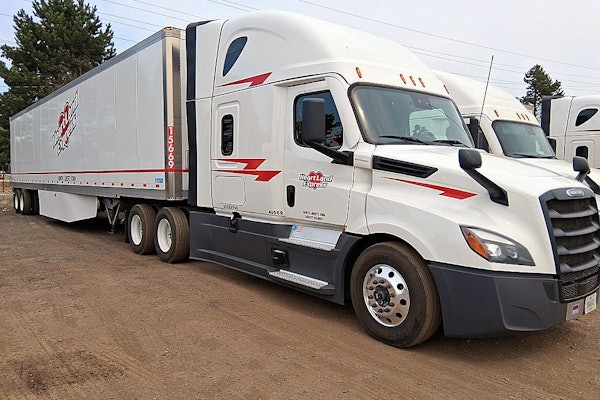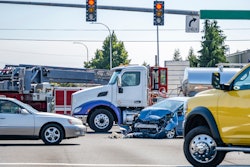There is more technology on the market than ever to support driver safety, yet trucking companies are still experiencing increased safety risks.
Jim Higby, lead of safety and compliance strategy at fleet management and driver safety platform Motive, said fleets are seeing widening safety gaps because their systems are fragmented and difficult to use at scale. Safety, compliance and operations teams also often work across disconnected tools, creating blind spots, he added.
According to the 2026 Motive ROI Report, which surveyed more than 350 of its customers across transportation, logistics, construction, energy, field services, oil and gas, food and beverage, and other industries between June and August 2025, 70% of respondents said their greatest challenge is worker safety issues, including accidents, fatalities and litigation.
"We did the trial with the Motive product and almost immediately we had alerts for distracted driving and cell phone usage and things like that. And when we pulled up the video, sure enough, there’s the driver picking up his phone,” said Chris Jaffe, senior vice president of technology at Agmark Logistics.
The Motive platform aims to help companies prevent accidents and lower accident-related costs. According to the report, 92% of survey respondents reported fewer accidents since adopting Motive. Organizations have seen 80% fewer collisions in the first year, the report says.
"We have seen an 89% reduction in accidents as a result of using the Motive AI Dashcam,” said Karol Smith, director of transport safety at Estes Forwarding Worldwide.
[RELATED: Synergy in AI and the human element perfect fleet safety]
Higby said accurate AI and connected technology have become even more essential to make this happen. He said it empowers both drivers and managers to make safer decisions in real time at a time when companies are working with smaller teams.
“Driver turnover remains high, and management teams are leaner, meaning fewer people are being asked to do more with less,” Higby said. “Traditionally, organizations relied on larger safety departments and highly experienced drivers to uphold performance standards. Today, less experienced drivers and management teams are taking on more responsibility for safety, often without the resources or time to manage it effectively.”
This challenge is compounded by rising risks on the road.
He said nuclear verdicts continue to climb, public expectations for safety are higher than ever, and insurance premiums are following suit.
“Our recent partnership with GEICO is a clear example of how accurate AI can translate directly into safety and financial outcomes,” Higby added. “This alignment between technology and insurance can help customers reduce risk, lower costs and protect their drivers, all while strengthening their bottom line.”
The report says 83% of respondents reported a steep decline in accident-related costs, including legal fees, litigation expenses and vehicle repairs and a 25% decrease in insurance costs annually.
Higby said this is the result of accurate AI and unified workflows, which has led to safety ownership extending across organizations, from drivers to dispatchers to executives.
“For trucking companies in particular, AI is becoming essential not just for efficiency, but for keeping teams safe and operations sustainable in an increasingly high-risk environment,” he said.
Those safety gains translate directly into cost reductions. Western Express (CCJ Top 250, No. 31) reduced rollovers by 42%, resulting in $250,000 saved on average per incident.
"When we look at that cost savings, that’s where we had the biggest opportunity to make an impact to our business,” said Western Express Director of Safety Daniel Patterson.
That efficiency element is key, too, to reducing costs.
Rising costs (69%) and operational inefficiencies (42%) were among survey respondents’ greatest challenges. The survey found that fleet managers who streamline fleet tracking with Motive save 25 hours on average per week, equal to 150 full workdays a year.
“The bigger picture is that AI is finally giving organizations in the physical economy real-time, trustworthy visibility into their people, assets and operations,” Higby said. “When that visibility is accurate, and when leaders can trust it, everything gets safer, faster and more cost-efficient.”














